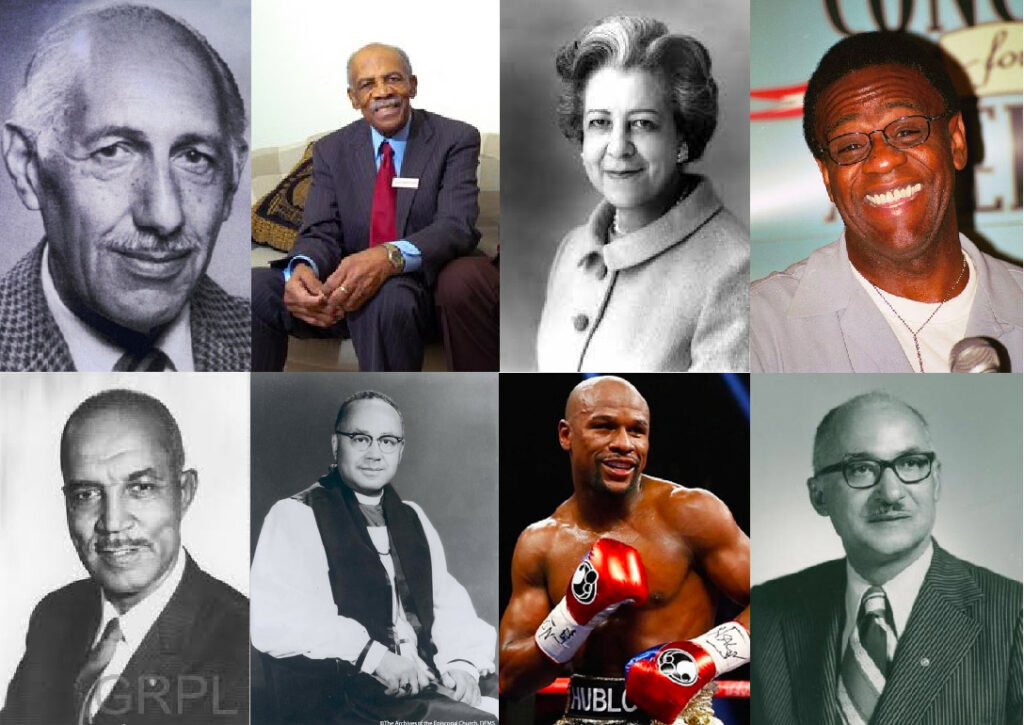Every year at this time, we celebrate and recognize the contributions of African Americans who have impacted the American historical timeline. Usually, we focus on people like Rosa Parks, Dr. Martin Luther King Jr., and sometimes Crispus Attucks, Fredrick Douglas, or others who are ensconced in American history. However there are some hidden historical figures who hail from our very own furniture city. Like the Hidden Figures of movie, these individuals have made their mark in the American social landscape and also should be recognized and celebrated. Some are national figures while others made a significant local impact.
 William Glenn
William Glenn
William Melbourne Glenn was born in Grand Rapids in 1903. He father was a coachman and chauffeur. Glenn ancestry included both black and white people this exposed him to racism firsthand at an early age. After graduation from Central High School, he got a job as a bellhop at the Pantlind Hotel the best job he could find at the time. He went on the become the first African American hired by the Hayes Manufacturing Company in 1941 when the work of the NAACP opened the doors to employment there.
Shortly after beginning work at Hayes, he was elected shop steward later became plant Chairman. He was also elected to the Kent County Industrial Council and given the responsibility of overseeing the implementation of fair employment practices laws. Glenn evaluation the blacks were not being fairly employed lead to blacks being hired at General Motors, and other local manufacturing plants.
After a union-sponsored trip to Europe, which included a visit to the Soviet Union, Glenn had his passport taken on return to the United States. He was able to recoup his passport but was later fired by Hayes. He filed a grievance and was reinstated but then refired. He served the Grand Rapids Community in various capacities. He was the President of the Grand Rapids NAACP, served on the Commission for Racial Equality, and the Housing Committee of the Grand Rapids Urban League. In 1971 he was chosen as Man of the Year by the Western Chapter of the American Civil Liberties Union. The Grand Rapids Public Library has a collection of Glenn’s writings, photographs, correspondences and papers.
Reuben Smartt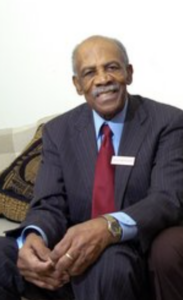
Reuben Smartt, also known as “The Traveling Disciple”, was an educator in the Grand Rapids school district. He served as a teacher and principal at South Middle School for 29 years. Born in Kentucky, Smartt was a veteran of World War II and among the first African Americans to serve in the United States Marine Corps. He served in the African American Marine unit called to the Montford Point Marines. Despite experiences of discrimination, Smartt and the Montford Point Marines were later awarded the Congressional Gold Medal. After posting in the Marshall Island where he took part in missions to Okinawa and Iwo Jima, Smartt returned to civilian life with dreams of being a professional athlete. Having played organized baseball, football, and basketball on base teams he returned to Kentucky completed a degree and accepted an offer to play for the Grand Rapids’ Black Sox Negro League baseball team.
Smartt had a long and accomplished history as an educator in Grand Rapids. In addition to teaching, Smartt mentored children through Upward Bound and Running Start programs he started in Grand Rapids. He directed and coached children in an inner-city baseball league. In 2011, he received the Giants Among Giants Award. Smart was a member of the Kappa Alpha Psi Fraternity and a lifetime member of the Michigan Jazz Society.
 Al Green
Al Green
Reverend Al Green, a pastor, gospel and soul singer, grew up in Grand Rapids. Born in Arkansas, he moved to the city in the 1950’s. Green attended South High School and sang in several churches. Green returned to perform in Grand Rapids as recently as June of 2019, when he had a sold out concert at Frederick Meijer Gardens.
Green has had a successful musical career. He has sold over 20 million records and won 11 Grammy awards, including a lifetime achievement award. Green is known for a string of hit singles starting in the seventies, including Take Me to the River, Tired of Being Alone, Love and Happiness and his megahit Let’s Stay Together. He won his eighth Grammy for the soul gospel song the Lord Will Make a Way. Green also appeared on Broadway in the play Your Arms to Short to Box with God alongside singer Patti Labelle. is listed on Rolling Stone Magazine’s 100 Greatest Singers, and 100 Greatest Artist lists. He was inducted into the Rock and Roll Hall of Fame in 1995. Green now pastors a church in Memphis Tennessee.
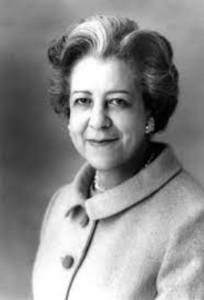 Helen Claytor
Helen Claytor
Helen Jackson Claytor was born in Minneapolis, Minnesota as the daughter of a pullman porter. She graduated Magna Cum laude Phi Beta Kappa with a teaching degree from the University of Minnesota. Unable to find a teaching job, she took a position at the Young Women’s Christian Association (YWCA) in Trenton, New Jersey. After a stint as the YWCA in Kansas City, she joined the race relations office of the National YWCA in New York. In this role, she traveled around the country working to desegregate YWCAs. On a trip to Grand Rapids, she met Robert Claytor, who she married in 1943.
She moved to Grand Rapids in 1944 and continued to do groundbreaking work in race relations in a volunteer capacity through the YWCA. She served on several national boards and became the national YWCA president from 1967-1973. She also served on the YWCA World Council representing the United States. That role took her around the world to meetings in China, Australia, Switzerland, Jamaica, and Ghana. In Grand Rapids, she served on the Grand Rapids Chapter of the Michigan Commission on Human Rights. She was appointed to a group that lead the first study on race relations in the city, which led to the formation of the city Human Relations Commission which evolved to the City of Grand Rapids Equal Opportunities Department. Additionally, she served on the Grand Rapids Hospital Council, Hospice and the Grand Rapids Historical Commission. Claytor died in 2005 and left a rich legacy of service to the African American Community and the City of Grand Rapids.
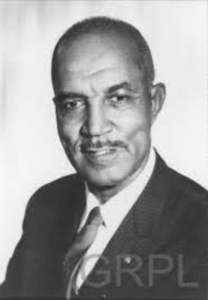 Floyd Skinner
Floyd Skinner
Floyd Skinner, an attorney and former baseball player, was the first black member of the Grand Rapids Bar Association. A 1926 graduate of the University of Michigan, Skinner was a longtime member of the local NAACP chapter and served as its president in the 1930s. Along with one of Grand Rapids’ first black business owners, Milo Brown, Skinner founded the Progressive Voters League. In its first year, the league helped get more than 75% of Grand Rapids’ eligible black voters to the polls.
 John M. Burgess
John M. Burgess
The Right Reverend Bishop John M. Burgess was born in Grand Rapids as the son of a railroad car waiter. Bishop Burgess graduated from the University of Michigan with a bachelor’s degree and then a master’s degree in sociology a year later. He continued his education at the Episcopal Theological School in Massachusetts, where he was one of the school’s first African American graduates.
After graduation in 1934, Burgess returned to Grand Rapids where his ministry focused on the working-class communities in Grand Rapids, other parts of Michigan, and Ohio. He is said to believe that it was important to care for people’s physical as well as spiritual needs. In 1946, he became the chaplain at Howard University where he became the first African American elevated to the office of canon at the National Cathedral in Washington. In this role he was an advocate for human and civil rights. He later returned to Massachusetts where he was consecrated suffragan bishop and became the first African American to lead and have oversight over white congregations in Massachusetts. In 1969 he was elected to serve as the Bishop of the Episcopal Diocese of Massachusetts. He was known for his efforts to revitalize urban ministry, confront racism in public schools and build bridges between black and white communities. He worked tirelessly to make the Church more inclusive until his retirement in 1975 Following his retirement he taught pastoral Theology at Berkley Divinity School and Yale Divinity School and was active in the National and World Council of Churches.
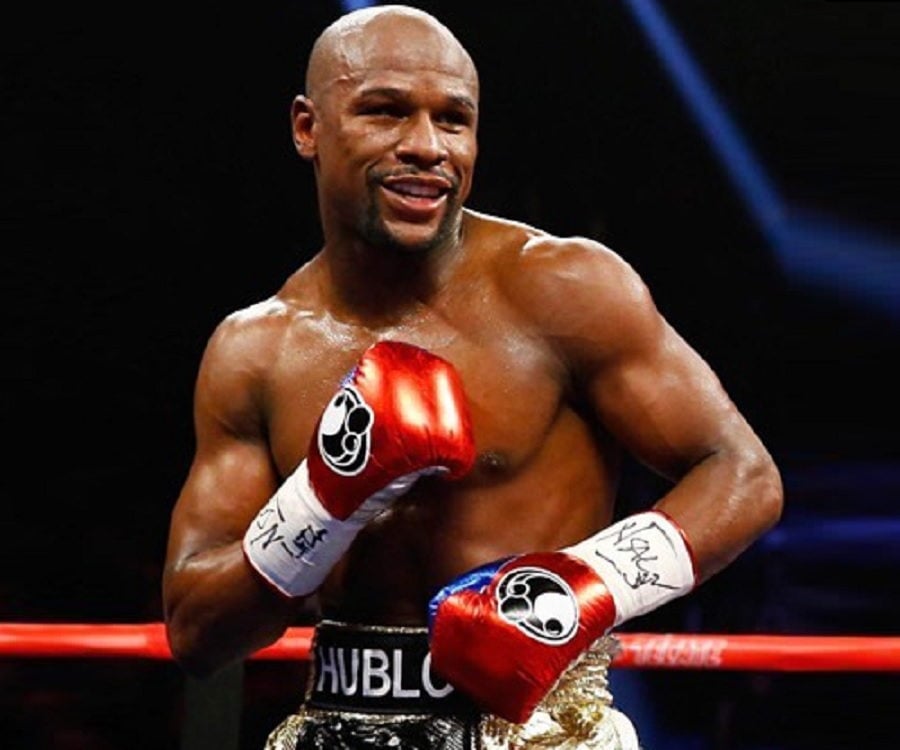 Floyd Mayweather Jr.
Floyd Mayweather Jr.
Known for his pugilistic flair, Floyd Mayweather Jr. is also a successful businessman whose net worth is estimated at $450 million. Mayweather attended Ottawa Hills High School. His boxing career lasted from 1996-2015. During that time, he won a bronze medal in the 1996 Olympics and fifteen major world championships in five different weight classes. In 2016, ESPN ranked him as the best boxer of the last 25 years. He won 26 consecutive boxing matches and was inducted into the International Boxing Hall of Fame in 2021. He was listed as the highest paid athlete by Forbes in 2015. Mayweather started his own boxing promotion company, Mayweather Promotions, in 2006. Leveraging his ability to attract large pay per view crowds into a business, he is now a full-time boxing promoter.
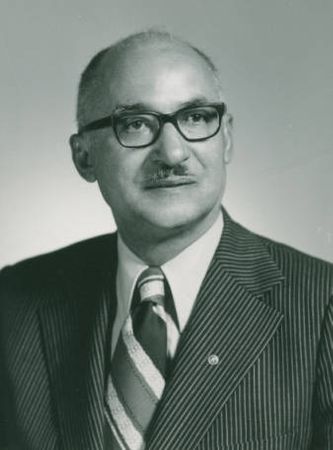 Lyman Parks
Lyman Parks
Reverend Lyman Parks was mayor of Grand Rapids from 1971-1976. He was the first African American to serve in that role. He was also first African American to be elected to the Grand Rapids City Commission. Parks moved to Grand Rapids in 1966 to become the pastor of First Community AME Church.
Parks became mayor of Grand Rapids by appointment to fulfill the term of Robert Boelens who resigned from the office. He won his own term to the office with the support and endorsement of prominent politician Vice President Gerald R Ford. Parks lost his bid for reelection in 1976 and returned to ministry. He later appointed to the State Officers Compensation Commission.
When he retired from ministry, Parks moved to Chicago for a brief period of service before returning to Grand Rapids. The city of Grand Rapids unveiled a statue in his honor in recognition of his many contributions to the city.
To learn more about the history of African Americans in Grand Rapids I recommend two books. African American in the Furniture by Dr. Randall Jelks. (Thanks to Professor Jelks for his assistance getting this list together), and City Within a City.
